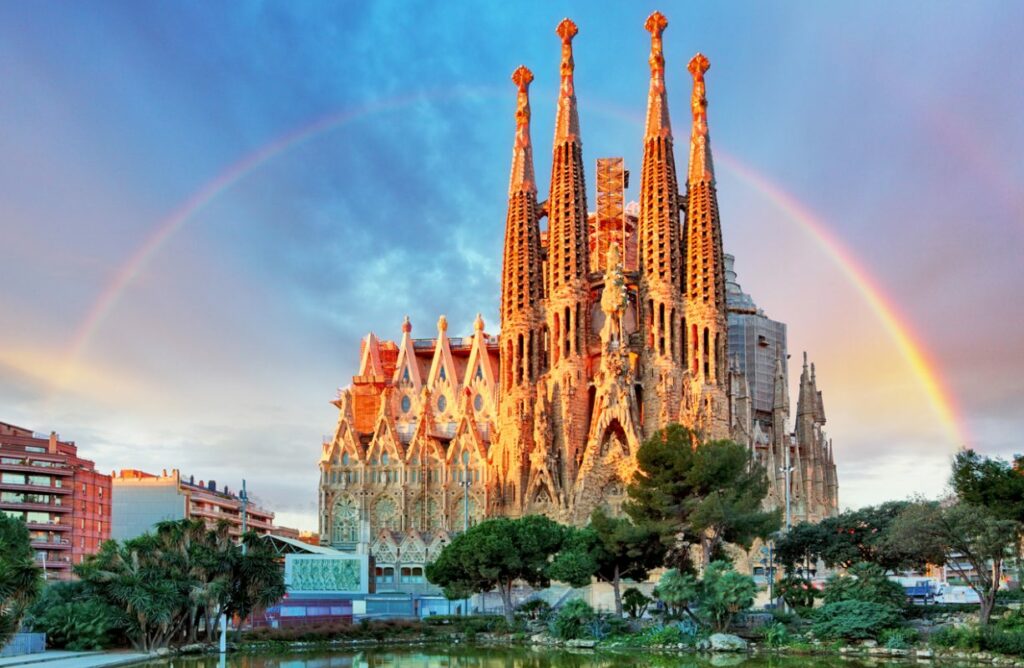Barcelona, Spain: A Vibrant Tapestry of Gaudi’s Dreams, Catalan Culture, and Mediterranean Splendor

Nestled along the northeastern coast of the Iberian Peninsula, where the azure waters of the Mediterranean Sea embrace the land, lies the enchanting city of Barcelona. As the capital of Catalonia, Barcelona stands not only as Spain’s second-largest city but as a cultural beacon that weaves together history, modernity, and the unmistakable touch of architectural genius, Antoni Gaudí. In this extensive exploration, we embark on a journey through the bustling streets, historic landmarks, and artistic wonders that define the captivating allure of Barcelona.
Gaudi’s Architectural Masterpieces:
Barcelona is synonymous with the distinctive architectural creations of Antoni Gaudí, a visionary whose works have left an indelible mark on the city’s skyline. La Sagrada Família, Gaudí’s magnum opus, is a testament to his unparalleled imagination and creativity. This basilica, still under construction after more than a century, mesmerizes with its intricate façades, soaring spires, and a mesmerizing interplay of light within its sacred interior.
Park Güell, another of Gaudí’s masterpieces, is a whimsical public park that transports visitors to a fairy-tale world. From the iconic lizard sculpture, known as “El Drac,” to the vibrant ceramic mosaics and sinuous pathways, every element of Park Güell reflects Gaudí’s love for nature and his ability to blend art with the environment.
Casa Batlló and Casa Milà, both located on the famed Passeig de Gràcia, are two more jewels in Gaudí’s architectural crown. These Modernist buildings showcase the architect’s innovative use of materials, organic forms, and meticulous attention to detail.
Historic Landmarks and Gothic Quarters:
Beyond Gaudí’s influence, Barcelona boasts a rich tapestry of historic landmarks that narrate the city’s storied past. The Gothic Quarter, or Barri Gòtic, is a labyrinthine district where narrow cobblestone streets wind through medieval buildings, charming squares, and hidden courtyards. The Barcelona Cathedral, a Gothic masterpiece with its spires and intricately carved façade, stands as a spiritual anchor in this historic quarter.
The Plaça de Sant Jaume, the city’s political heart, is home to the Palau de la Generalitat and Barcelona City Hall. These architectural gems serve as a reminder of the city’s political and administrative heritage.
La Rambla and Mercat de la Boqueria:
La Rambla, a bustling boulevard that stretches from Plaça de Catalunya to the Christopher Columbus Monument at Port Vell, is Barcelona’s iconic promenade. Lined with cafes, shops, and street performers, La Rambla is a microcosm of the city’s vibrant energy. The La Boqueria Market, located off La Rambla, is a sensory delight where locals and visitors can explore stalls bursting with fresh produce, artisanal products, and an array of culinary delights.
Catalan Cuisine and Culinary Traditions:
Barcelona’s culinary scene is a celebration of Catalan flavors, blending traditional recipes with innovative techniques. From the iconic paella to the hearty calcots, grilled spring onions dipped in romesco sauce, the city’s restaurants showcase the diverse and delectable offerings of Catalan cuisine.
The Eixample district, home to numerous Michelin-starred restaurants, caters to gastronomic connoisseurs seeking inventive dishes crafted by visionary chefs. Meanwhile, the waterfront area, with its seafood restaurants, invites diners to savor the fresh catches of the Mediterranean.
Artistic Enclaves:
Barcelona’s commitment to the arts extends beyond Gaudí’s architectural wonders. The Barcelona Museum of Contemporary Art (MACBA) and the Fundació Joan Miró are prominent institutions that celebrate modern and contemporary art. The Picasso Museum, located in the historic El Born district, houses one of the most extensive collections of artworks by the legendary painter, providing a glimpse into his formative years.
Mediterranean Beaches and Waterfront Wonders:
Barcelona’s proximity to the Mediterranean Sea bestows upon it a unique charm. The city’s beaches, including Barceloneta Beach and Bogatell Beach, offer a delightful escape where locals and visitors bask in the sun, swim in the azure waters, and enjoy seaside promenades. The W Barcelona, an architectural marvel itself, stands as a sentinel overlooking the coastline, offering panoramic views of the city and the Mediterranean beyond.
Festivals and Cultural Celebrations:
Barcelona’s calendar is punctuated with vibrant festivals that embody the city’s joie de vivre. La Mercè, the city’s largest street festival, takes place in September, featuring parades, concerts, and fireworks. The Gràcia Festival transforms the Gràcia district into a colorful spectacle of decorated streets, live performances, and cultural events.
Football Frenzy at Camp Nou:
Football is more than a sport in Barcelona; it’s a passion that unites the city. Camp Nou, the iconic stadium that houses FC Barcelona, becomes a cauldron of emotions during matches. The Camp Nou Experience allows visitors to explore the stadium, the FC Barcelona Museum, and relive the club’s illustrious history.
Conclusion:
Barcelona, with its Gaudí-infused dreams, Catalan culture, Mediterranean splendor, and a vibrant arts scene, stands as a city that transcends the ordinary. Every step through its historic streets, every gaze at its architectural wonders, and every taste of its culinary delights is a journey into the heart of Catalonia’s spirit. Barcelona captivates the senses, leaving an indelible mark on all who wander through its streets and embrace the rich tapestry of its cultural heritage. In Barcelona, where the past dances with the present and the sea whispers to the mountains, every moment becomes a celebration of life, art, and the enduring allure of this magnificent city.




